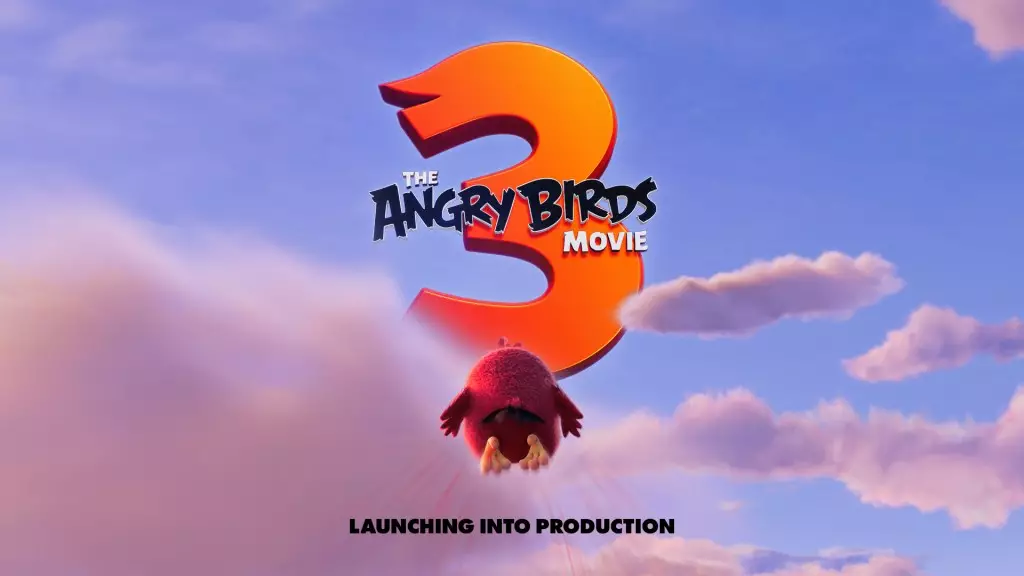The announcement of “The Angry Birds Movie 3,” set to hit theaters on January 29, 2027, has reignited discussions surrounding one of the most exploited franchises in recent animation history. One has to wonder, how many films does it take for a franchise to reach its peak before it spirals into mediocrity? Paramount Pictures’ decision to back this project comes on the heels of its predecessors grossing a staggering combined total of half a billion dollars. This financial success overshadows a critical reality: the increasing tendency for studios to pump out sequels and reboots with little regard for innovation or artistic integrity. This trend is alarming, as it suggests that box office performance is now prioritized over storytelling, character development, and genuine audience engagement.
Validating the Cast While Ignoring the Content
While it is commendable that the original voice cast, including Jason Sudeikis, Josh Gad, Rachel Bloom, and Danny McBride, will return to reprise their roles, one cannot ignore the increasingly extravagant ensemble of new talent. Sure, adding the likes of Keke Palmer, Emma Myers, and Lily James appears to be a strategic decision aimed at capturing the attention of a broader audience, but at what cost? Bringing together a plethora of comedic talents does not guarantee that the substance of the film will rise to meet their collective comedic prowess. It raises questions about whether studios are relying on star power over originality. The same routine of celebrity casting may ultimately become a crutch that overshadows the heart of storytelling, a paradoxical move that threatens the charismatic essence of the original characters.
The Creative Teams: Relying on Proven Names
Directed by John Rice, known for his work in projects like “Beavis & Butt-Head Do the Universe,” and produced by veteran names such as John Cohen and Dan Chuba, “The Angry Birds Movie 3” has a reputable crew behind it. However, what does it say about the industry when creative teams continuously rely on proven names instead of giving fresh talent a chance? The good old days of cinema are slowly fading, replaced by what seems to be a relentless churn of predictable blockbusters. The screenplay, again brought to life by Thurop Van Orman, compels one to question whether there remains any room for innovation. Relying on established talent can lead to a comfort zone where creative risks are abandoned.
The Musical Landscape: Revisiting Familiar Rhythms
Chiming in as a noteworthy factor is the return of Grammy Award-winning composer Heitor Pereira, who has scored previous installments in the franchise. Preserving continuity in the musical landscape is undoubtedly a reliable tactic; however, it brings to light another concern. The return to familiar rhythms can sometimes stifle innovation in a franchise. Instead of pushing boundaries and exploring new musical themes, we may find ourselves trapped within the sonic confines established by earlier films. Will audiences be treated to mere rehashes of musical motifs, or can we expect creative risks representative of the evolution of both film and technology? The latter seems less likely when studios opt for safety over originality.
Brand Versatility or Stagnation?
Rovio’s Alex Pelletier-Normand stated that the “Angry Birds” brand has showcased remarkable versatility, transitioning from mobile gaming to film and consumer products. However, we must scrutinize whether this versatility is genuine or if it represents a corporate façade masking stagnation. While the franchise may have generated significant revenue, it has increasingly come under fire for lack of innovation—a worrying trend for fans and new audiences alike. The endless cycle of capitalizing on nostalgia raises an alarm bell for creators in the industry, as it risks creating a generation of moviegoers conditioned to settle for the familiar rather than seek genuine storytelling.
The recent announcements surrounding “The Angry Birds Movie 3” serve as a microcosm of an entertainment industry increasingly trapped in a maze of its own making. While family films are important, they shouldn’t come at the expense of imagination, originality, and critical engagement. As we look forward to yet another installment of familiar characters, we must critically question the motives of Hollywood and its role in engendering quality cinema. Is the audience truly being entertained, or are they simply drawn back to a brand that prioritizes profit over substance?

Leave a Reply